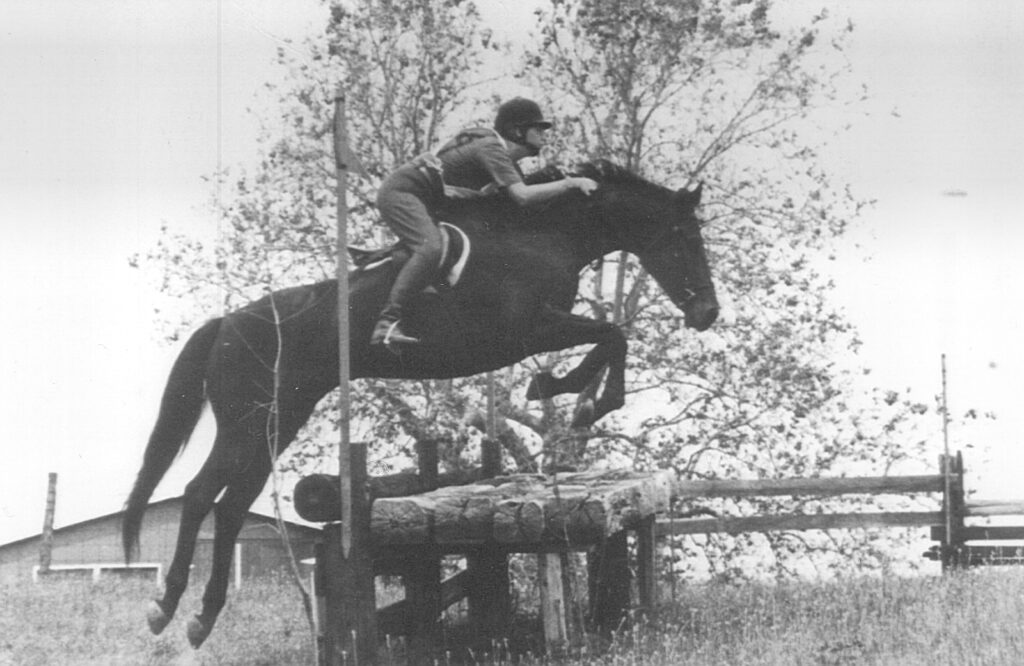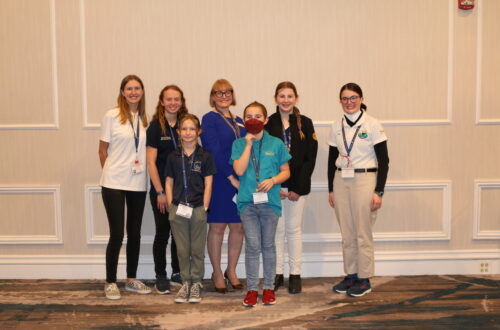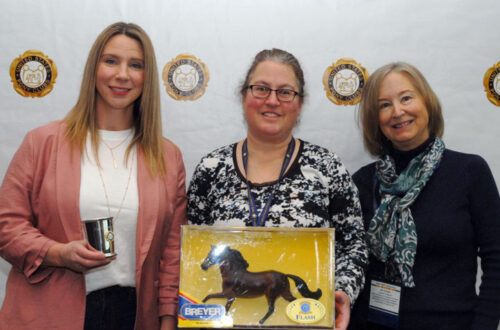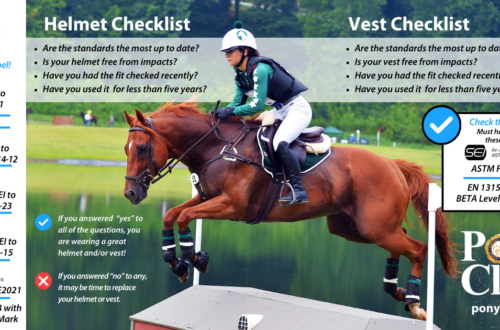
The Solid Seventies for the United States Pony Clubs
Adapted from “A Story to Tell, The United States Pony Clubs, Inc. 1954–2004”
The USPC truly “came into its own” during the 1970s as the number of Pony Club members, events, concerns, and clubs expanded beyond any of the original founders’ dreams. The expansion brought the club’s volunteer leadership to the clear understanding that they could no longer continue functioning administratively as they had without significant changes.
The Equestrian Leader in Helmet Safety
Safety was on the minds of USPC’s leadership as the organization entered the 1970s. President Rufus Wesson formed an ad hoc committee in 1970 to study protective headgear. Eventually, the committee recommended specific helmet criteria to the board, which approved the helmets determined safest for riders.
Over the next 20 years, USPC became the equestrian leader in headgear safety—a leadership role that continues today.

A Changing Decade at Every Level
USPC had grown to more than 200 clubs serving almost 10,000 members. Programs were rich, varied, and challenging. Yet, parents and instructors alike realized changes were in store, both on the local club level, as well as for the national organization.
USPC had become unwieldy through sheer success. Alice Reidy was still “running the show” from her basement with the help of a paid, part-time assistant. The old ways could not continue to serve the new populations well, especially as Reidy herself had aged. Local clubs saw that the TV generation of young people raised on Sesame Street learned differently. The number of boys in USPC seemed to shrink as competing entertainments and activities vied for their time.
Instructional changes and activities to respond to the changing learning styles of young people started on the local club level. More activities of shorter duration, small group interaction—these were important shifts in education, both in the classroom as well as for USPC. Some clubs were made up of “visiting instructors” from other regions so as to freshen the tutorial process with fresh perspectives.
In 1971, USPC sent an international exchange team to England, and in 1973, six members traveled on an Inter-Pacific Exchange team.
In 1973, a new competition—Tetrathlon—combining riding, swimming, running, and shooting was started initially developed for boys only as an added attraction to and for them. The event quickly opened to girls and became a much-anticipated addition to the calendar of USPC activities. The first National Tetrathlon Championships were held in 1974.
National Organization
Since 1956, Reidy had served as secretary for the USPC. The volunteer role had technically been concerned with minutes and correspondence for the board. However, she had reinterpreted the responsibility to be one of taking complete care of the USPC minutiae, including applications, registrations, accomplishments, judging, event records, and standards.
By 1974, she simply could no longer devote the required energy, plus her basement file cabinets had long since filled to overflowing. USPC had 259 clubs in 22 regions serving 9,200 members. Reidy agreed to relinquish her file cabinets and help USPC move toward professional management. George Helwig became executive director that year. The files were trucked out of Reidy’s cellar and the official headquarters opening in West Chester, Pennsylvania. Reidy officially retired as secretary in 1975.
George Helwig had been active in USPC for many years. He was an organizer, District Commissioner of the Hudson Pony Club, and was Regional Supervisor for the Tri-State Region when he stepped into the executive director role. Helwig also served as chair of the Test Preparation Committee.
With 10,000 members in the USPC, the organization elected James K. Ligon as president in 1978, making him the first Pony Club graduate to hold the position.
Working Together Toward Pony Club Goals
During these years, 21 national committees assisted the board in setting, changing, and implementing policies and future direction for the members. The board authorized the first H-A certifications (then known as ratings) in 1977.
The 1975 USPC Annual Meeting was held outside New York City for the first time. It was held in Philadelphia over three days and included workshops, seminars, and open committee meetings. Competition and instruction councils, each under a vice president, were created to coordinate the work of the various competition and instructional committees.
Parents who had worked tirelessly with their children now saw grandchildren entering the ranks. In many cases, three-generation families worked together to continue the USPC goals.
With a professional executive leading the staff, and veteran and alumni members dedicating countless volunteer hours, USPC turned to strengthening its already stringent standards.
In the late 1970s, Anne Baker led the first Instruction Council in starting what became a 15-year effort to clarify the USPC’s Standards of Proficiency. Her team developed flow charts for all requirements, showing how they “flowed from the lowest rating to the highest.” Out of this work came the subdivision of ratings into nine levels. It laid the groundwork for the eventual publication of the USPC Manuals of Horsemanship in the 1990s.
As the Pony Club members looked towards the decade of the 1980s, USPC could be judged a truly national organization with international implications and influence. The legacy of the founders’ efforts had borne a rich harvest. Louise Bedford would no longer need to worry about the direction and training of future generation of riders.
USPC Presidents during the 1970s:
- Rufus Wesson
- Colonel Howard Fair
- John L. Love
- James K. Ligon
Support the Future of The United States Pony Clubs
In honor of USPC’s history, consider showing your support with a gift to the Annual Fund. A gift of any amount helps ensure the future of Pony Club’s mission for generations to come.
In addition, help us fundraise by starting a Facebook Fundraiser.
To order your 70th Anniversary commemorative pin, visit https://shopponyclub.org/products/pin-70th-anniversary
Read More About Pony Club’s History:
The Founding Fifties for the United States Pony Clubs
The Expanding Sixties for the United States Pony Clubs
More





